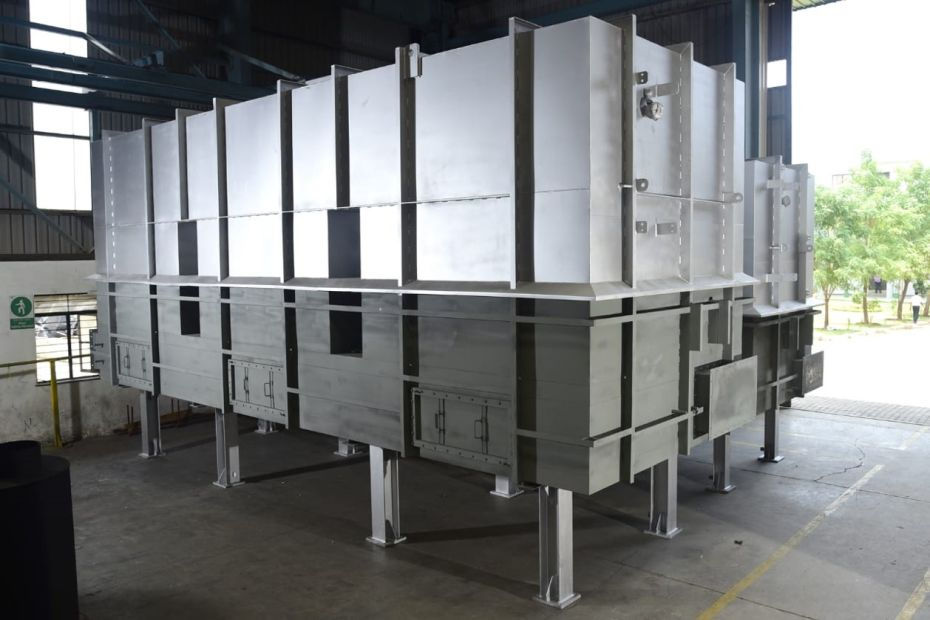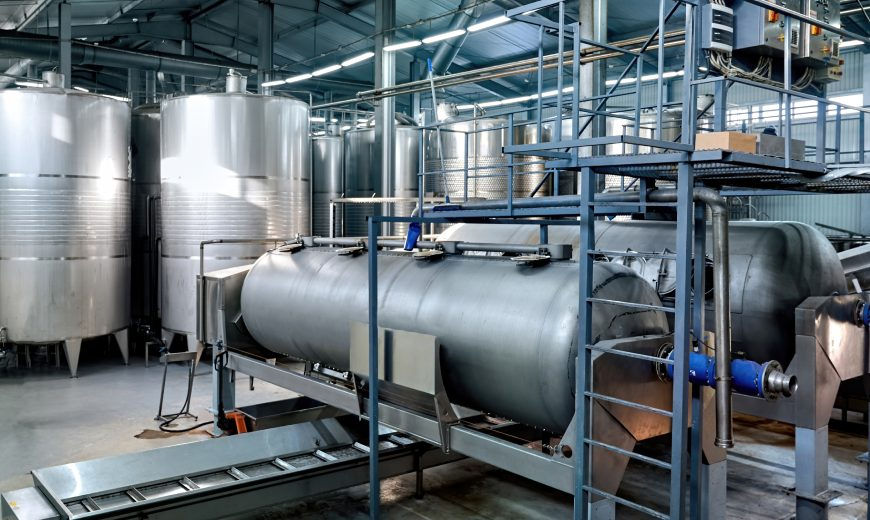A Complete Guide to Shell-and-Tube Heat Exchangers
- Teknoflow SEO
- May 9, 2024
- 3 min read

Introduction to Heat Exchangers
In the field of heat transfer equipment, shell-and-tube heat exchangers stand out as one of the most versatile and widely used devices. These ingenious mechanisms facilitate the efficient exchange of heat between two fluids while keeping them physically separated. The fundamental principle underlying their operation lies in optimizing thermal exchange between the fluids, a process pivotal across various industries.
Understanding Shell-and-Tube Heat Exchangers
What Are Shell-and-Tube Heat Exchangers?
Shell-and-tube heat exchangers are intricate systems comprised of a cylindrical shell with multiple tubes running through it. One fluid flow through the tubes (the tube-side fluid), while the other circulates around the tubes within the shell (the shell-side fluid). This arrangement enables effective heat transfer between the two fluids without direct contact, ensuring safety and efficiency in diverse applications.
Design Features
Tube Configuration
The configuration of tubes within a shell-and-tube exchanger is critical to its performance. Various designs, such as u-tube, straight tube, and double-pipe, cater to specific requirements concerning heat transfer mechanisms and fluid dynamics.
Shell Construction
The shell encasing the tubes is typically constructed from robust materials like steel or titanium, offering durability and resistance to corrosion. The shell's design incorporates features such as baffles and tube sheets to enhance fluid dynamics and promote optimal heat exchange efficiency.
check out this article for more insights into shell-and-tube heat exchangers design
Heat Transfer Mechanisms in Shell-and-Tube Heat Exchangers
Conduction and Convection
Heat transfer within shell-and-tube exchangers primarily occurs through conduction and convection mechanisms. Conduction involves the transfer of heat through the solid walls of the tubes, while convection entails the movement of fluids, facilitating heat exchange between the tube-side and shell-side mediums.
Counterflow vs. Parallel Flow
The arrangement of fluid flow within shell-and-tube heat exchangers significantly impacts their efficiency. In counterflow configurations, the fluids travel in opposite directions, maximizing the temperature gradient across the exchanger and optimizing heat transfer. Conversely, parallel flow setups exhibit reduced efficiency due to diminished temperature differentials along the flow path.
Industrial Applications of Shell-and-Tube Heat Exchangers
Petrochemical Industry
In the petrochemical sector, shell-and-tube exchangers play a pivotal role in processes such as distillation, condensation, and vaporization. Their robust design and high heat transfer efficiency make them indispensable for maintaining optimal operating conditions in refineries and chemical plants.
HVAC Systems
Heating, ventilation, and air conditioning (HVAC) systems rely on heat exchangers to regulate indoor temperatures effectively. Shell-and-tube heat exchangers facilitate the transfer of heat between refrigerants and ambient air, ensuring efficient operation and comfort in residential, commercial, and industrial settings.
Power Generation
In power generation facilities, shell-and-tube heat exchangers contribute to the efficient conversion of thermal energy into electricity. They are integral components of steam condensers, cooling systems, and heat recovery units, supporting sustainable energy production and minimizing environmental impact.
Conclusion
Shell-and-tube heat exchangers represent a cornerstone of heat transfer equipment, offering unparalleled versatility and efficiency across various industries. Understanding their design principles, heat transfer mechanisms, and industrial applications is essential for optimizing performance and achieving operational excellence in diverse thermal processes.
Name: Teknoflow Green Equipments Pvt. Ltd.
Address: S. No. 19/2,Ambe Bahula, Nashik 422010,Maharashtra,INDIA
Phone No: 89567 79584
Website: www.teknoflow.co
FAQ’S
What is a shell-and-tube heat exchanger?
A shell-and-tube heat exchanger is a device used for transferring heat between two fluids. It consists of a series of tubes (the "tube bundle") enclosed within a cylindrical shell. One fluid flow through the tubes while the other flows around them in the shell.
How does a shell-and-tube heat exchanger work?
Heat exchange occurs between the two fluids through the walls of the tubes. One fluid, known as the "process fluid," passes through the tubes, while the other fluid, called the "service fluid," flows around the outside of the tubes. Heat is transferred from the hot fluid to the cooler fluid through conduction.
What are the applications of shell-and-tube heat exchanger?
Shell-and-tube heat exchangers are used in various industries for heating, cooling, condensation, and evaporation processes. Common applications include HVAC systems, chemical processing plants, power generation, oil refineries, and food processing.
What are the advantages of shell-and-tube heat exchanger?
Shell-and-tube heat exchangers offer several advantages, including high heat transfer efficiency, scalability for different flow rates and temperatures, ease of maintenance (due to removable tube bundles), and suitability for handling high-pressure and high-temperature fluids.
What factors should be considered when selecting a shell-and-tube heat exchanger?
When choosing a shell-and-tube heat exchanger, factors such as the required heat transfer rate, fluid properties (such as temperature, pressure, and corrosiveness), space limitations, fouling tendencies, and maintenance accessibility should be taken into account. Additionally, consideration should be given to the materials of construction and the design standards to ensure compatibility with the operating conditions and regulatory requirements.



Comments